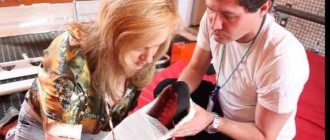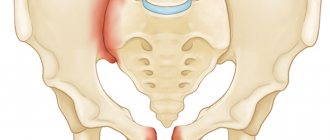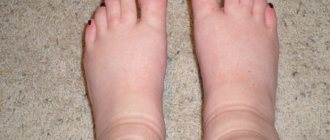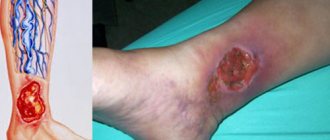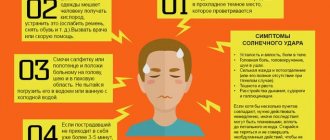What is a fracture?
Despite the fact that the bones of the human skeleton are strong, sometimes the mechanical impact on them is so strong that a fracture occurs. Very often, fractures occur during road accidents or during active sports. However, from time to time, fractures appear as a result of various diseases that are accompanied by changes in the strength characteristics of bone tissue.
Surprisingly, Neanderthals were able to treat fractures . Archaeologists examined 36 skeletons of human ancestors with signs of fractures and found that only 11 of them were treated improperly. It is worth noting that the methods of treating bone fractures in the Stone Age were practically no different from modern ones: the damaged limb was immobilized and fixed in the correct position necessary for bone healing.
The bone can break either completely or partially: in the latter case, doctors call it a crack.
Causes of such damage
The main negative factors leading to the occurrence of such fractures are injuries and falls. Depending on the location of the main impact vector, the type of damage is classified. Typically, such fractures resolve without displacement or formation of fragments, but, like any other types of damage to the skull, they are characterized by the severity of treatment and an unfavorable prognosis for the victim.
Open and closed fractures
With a closed fracture, the integrity of the skin surrounding the damaged bone is not compromised. If the bone is not only broken, but also becomes visible on the surface, they speak of an open fracture. Open fractures are more dangerous: they can be accompanied by severe bleeding, threatening the life of the injured person. In addition, open fractures can become infected, and the risk of developing an inflammatory process is high.
The mechanism of bone destruction is the same for both types of fracture. However, an open fracture is characterized by a violation of the integrity of soft tissues. It can occur due to exposure to the object that caused the injury. Sometimes the tissue is torn due to the sharp edge of the broken bone.
If an open fracture is visible to the naked eye, then a closed fracture may be indicated by symptoms such as bone pain or limitation of movement. Sometimes a doctor can diagnose a fracture only after an X-ray examination has been performed. Sometimes with closed fractures, the skin around the damaged bone becomes purple and the limb swells: this is caused by internal bleeding.
How are temporal region fractures classified?
Damage affecting the temporal region may cause associated brain lesions. In addition, the auditory and vestibular apparatus, the trigeminal ganglion and part of the sigmoid sinus are located in the temporal region. Due to the passage of the internal part of the carotid artery, such injuries are usually characterized by large blood loss and a high risk of death.
Depending on the location, the following types of fractures are distinguished:
- Fracture of the temporal bone scales;
- Fracture of the pyramid of the temporal bone;
- Depressed fracture;
- Linear fracture;
- Longitudinal fracture.
The consequences of a temporal bone fracture largely depend on the type of injury and the speed of assistance. Such injuries have their own characteristics, so it would be useful to know the differences and signs of different types of fractures.
Temporal bone squamous fracture
The structure of the temporal region is a cluster of bone structures of different structure and functionality. The thinnest and most vulnerable are represented by the so-called scales. This is the lateral part of the skull connecting the parietal region with the tympanic region.
Fractures of this part of the skull are often accompanied by compression of brain tissue, the formation of multiple fragments, as well as severe internal bleeding.
Fracture of the pyramid of the temporal bone
The most serious type of fracture involves damage to the labyrinthine passage as well as impairment of balance function. Such damage is reversible, partially reversible and irreversible. They arise as a result of a direct blow to the temporal or occipital region. Such fractures are often called transverse.
Symptoms of a transverse fracture:
- Loss of consciousness lasting from several hours to days. Often patients fall into a comatose state;
- Hematotympanum is diagnosed - blood entering the tympanic cavity of the middle ear;
- There may be leakage of liquorrhea (cerebrospinal fluid) from the external auditory canal or nasopharynx;
- There is deterioration in vestibular and auditory function;
- Nausea and vomiting, visual disturbances;
- Complete or partial paralysis of the facial nerve;
- Inability to maintain normal body position in space.
Symptoms of a fracture
The symptoms of an open and closed fracture are different. The main signs indicating that a closed fracture has occurred are:
- Sharp pain at the time of injury. Painful shock often occurs.
- When trying to move the affected limb, severe pain is felt.
- The limb becomes mobile in a place where there is no articular connection.
- When you feel the injured limb, clicks are heard.
- The damaged limb swells, a hematoma occurs, that is, internal hemorrhage.
With a closed fracture, the following symptoms are observed:
- At the site of the fracture, a wound appears with uneven, torn edges.
- Bleeding is observed, usually venous.
- Bone fragments are visible in the wound.
- Due to blood loss and painful shock, a person experiences severe dizziness and weakness, and possible loss of consciousness.
False joints
False joints occur when, after a fracture, the bone fragments do not come into close contact with each other. The doctor can easily recognize them by the shape and altered structure of the bone fragments. On one of the fragments a depression begins to develop, and on the other a semblance of a head is formed. They are formed due to mutual long-term friction. The area around the false joint resembles a joint capsule, which contains a lot of water.
If such a complication occurs, then there may be two possible consequences - the broken bones will not be able to move fully, or, on the contrary, they will be able to perform various acrobatic miracles, for example, such a bone can be rotated 360 degrees. If a false joint is formed, the limb is slightly shortened, sometimes even by ten centimeters.
Pseudarthrosis is formed as a result of certain diseases (infectious diseases, tabes dorsalis, rickets), as a result of loss of bone substance, tissue interposition (when tendons and muscles lie between bone fragments), and a damaged limb. Joints can only be corrected through surgery (bone grafting or prosthetics).
First aid for an open fracture
An open fracture is more dangerous than a closed one. This is associated with the risk of losing a large volume of blood or introducing dangerous microorganisms into an open wound. For this reason, it is necessary to provide first aid to victims who have an open fracture as soon as possible.
First of all, you need to call an ambulance. After this, the injured limb is immobilized and fixed. It is necessary that the victim remain calm until the ambulance arrives: any movement can lead to damage to new soft tissues.
It is important to quickly apply a tourniquet to the limb to avoid large blood loss. When the tourniquet is applied, you can treat the wound with an antiseptic, for example, iodine or brilliant green. Regular vodka will also work. To avoid painful shock, the victim should be given a painkiller, for example, analgin.
Diagnosis and treatment
After the patient is taken to the trauma center, the doctor collects anamnesis, visual examination and palpation of the injury site. Next, an X-ray examination and, if necessary, computed tomography or magnetic resonance imaging are performed. As an additional examination, ultrasound diagnostics and arthroscopy may be prescribed.
Once the diagnosis is made, the doctor prescribes the treatment needed for the specific type of fracture. For injuries without complications, manual reposition of bone fragments is performed, followed by application of a plaster cast. If the injury is complicated by severe displacement, damage to the neurovascular bundle, or internal cavitary organs, then surgical intervention is required.
During the operation, an orthopedic surgeon compares bone fragments and fastens them using special metal devices. After complete fusion of the bone, another operation is performed, during which the clamps are removed. During surgical treatment, the patient is allowed to remain without a cast, this depends on the type of method of fixation of bone fragments. The entire process of fracture consolidation takes place under periodic monitoring using x-rays.
While in the hospital, the patient is prescribed bed rest, the duration of which depends on the location and type of injury, as well as taking medications - analgesics, non-steroidal anti-inflammatory drugs, absorbents, vitamins and other medications. The period of bone healing also depends on where the bone damage occurred and what characteristics it has.
First aid for a closed fracture
Since with a closed fracture there is no damage to surrounding tissues and the integrity of the skin is not compromised, providing first aid is somewhat easier than with an open fracture. Of course, it is necessary to provide rest to the injured limb: otherwise, the bone fragments may move relative to each other, which can cause painful shock, damage to veins and arteries, as well as the transition of the fracture to an open form.
After this, a splint is applied. This is necessary in order to completely immobilize the bone between two closely spaced joints. Tires are made from any available materials, such as boards. You can tie a limb using a regular belt.
If the injured limb is twisted at an unnatural angle, you should never try to straighten it yourself.
Thus, open and closed fractures differ primarily in the nature of damage to nearby tissues . In addition, there are differences in the tactics of providing first aid to victims. However, there is something in common between the two types of fractures: you should never try to treat them at home! Only a doctor in a medical facility can achieve proper fusion of bones in both open and closed fractures!
Medicine and healthComment
Classification
In traumatology, there are several types of closed fractures, and the classification is based on the nature of the injury:
- Transverse. The line of bone integrity violation is located perpendicular to the bone element.
- Oblique. The bone is fractured at an angle relative to the axis of the bone element.
- Helical. Spiral fracture line with elements deployed along the axis.
- Splintered. Characterized by multiple fragments, without a single line.
- Hammered. One bone fragment is wedged into another.
- Wedge-shaped. A corresponding wedge-shaped deformation appears.
- Compression. There is no single fracture line, fragments appear, and the height of the bone decreases.
Doctors also classify closed fractures by location:
- diaphyseal – the diaphysis of the bone is injured;
- epiphyseal – one or both ends of the bone are injured;
- metaphyseal - the bone loses its integrity between the diaphysis and epiphysis.
Each fracture can be mild or complicated. And if an injury occurs in a child, it is called epiphysiolysis. It is characterized by a violation of the integrity of the bone along the ossification zone.
Closed fractures vary in severity:
- No offset. This type of injury is considered the easiest, since the bone fragments remain in place without injuring the skin and tissues.
- With offset. This type of fracture is considered the most common and the most dangerous, since bone fragments touch blood vessels, muscle tissue and ligaments, causing bleeding.
The most dangerous is considered to be a displaced fracture located in the chest area, since broken fragments can affect the organs responsible for the life support of the body.
